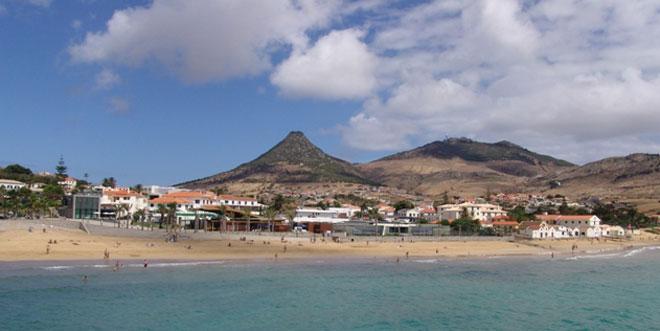
Island facts
The Portuguese navigators João Gonçalves Zarco and Tristão Vaz Teixeira arrived on the Island of Porto Santo in 1418, the first of the Portuguese discoveries overseas. Having been sent off their course by strong winds while exploring the western coast of Africa, Porto Santo provided them with a safe haven, hence its name, which means Blessed Harbour (Porto Santo).
Porto Santo is the second-largest island of the archipelago of Madeira and is located 75 km northeast of Funchal. Approximately 5,000 people inhabit the island, although, during the holiday season, the population can increase substantially.
Right in the Atlantic Ocean, Porto Santo, 11 km long and 6 km wide, has been long dubbed the Golden Island for its extensive, stunning 9 km long beach of fine and silky sand, bathed by turquoise waters. The climate in Porto Santo is mild all year round, with a sea temperature ranging between 17ºC and 22ºC, making this island always attractive, even in the winter.
How does the island currently produce energy?
Energy is essential for Porto Santo’s economic and social development and plays a decisive role in the Islands’ competitiveness, employment and quality of life. However, when produced with fossil fuels, it results in negative environmental impacts namely, GHG emissions.
On the other hand, due to the specificities from being an outermost island region, the Autonomous Region of Madeira faces higher costs of supply and conversion related to transport and scale of regional markets. Hence, it is the policy of the Regional Government to reduce the Region’s foreign energy dependence and become carbon neutral, in line with the ambitions of the country and the European Union. In terms of electric energy, the priority is to increase the share of renewable energy in the energy mix and store it during empty hours so as to minimize waste.
To achieve a full energy transition of the Island of Porto Santo, two key strategies were developed: the Sustainable Energy Action Plan (PAESI) and Porto Santo Sustentável – Smart Fossil Free Island.
Porto Santo Smart Fossil Free Island aims to reduce CO2 emissions to zero and is centred around two main axes, renewable energy and electric mobility.
Porto Santo's vision for a clean energy future
In 2016, the government of the Autonomous Region of Madeira, in partnership with the Electricity Company of Madeira (EEM) and the Renault Group, developed an innovative plan for the decarbonisation of Porto Santo Island. The EEM is responsible for the production and storage of clean energy, including the Porto Santo Battery Storage Powerplant. Renault outlines the electric mobility solutions.
The benefits of this strategy include smart charging of electric vehicles based on needs and the available electricity in the network. This attributes a second life to electric car batteries by providing stability to the network during the production of renewable energy. Charging reversal (Vehicle-to-Grid, V2G) allows energy stored in electric car batteries to be injected into the grid during peak consumption. The combination of these measures is expected to promote efficient consumption of renewable energy in a smart and technologically advanced manner, as well as reduce GHG emissions.
